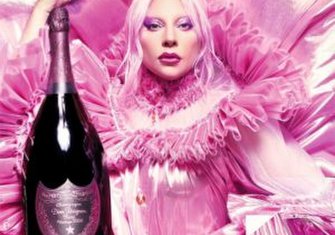We are all about celebrating wine and if it’s going to be pink – let’s raise a glass to Rosé Champagne!
5 Reasons to invest in Rosé Champagne
- Rosé Champagne sells at a premium to white
- It is rarer – less supply
- Average price growth of 29% in 2022
- Diversification
- A stable asset
Over the five years to the 31st May 2023, Champagne has been the top regional fine wine performer, delivering returns that have even topped Burgundy.
Champagne investment compared with other assets
Asset / index | 2 years | 5 years |
Liv-ex Champagne 50 | 45.5% | 76.8% |
Wine - Liv-ex 1000 | 22.6% | 34% |
Equities – S&P500 | 1.5% | 53.4% |
Equities – FTSE100 | 9.8% | 0.8% |
Gold | 4.4% | 52.1% |
Data source: Liv-ex.com, 31.05.2023
In 2022, during the Covid / Ukraine wine bull run, Champagne vied with Burgundy for top investment wine returns. The average growth in Rosé Champagne values in 2022 was 29% with Dom Perignon Rosé the top performer last year at 34.8%.
In 2023 prices have continued to soften from the peak in October 2022 and there is an opportunity for investors to currently acquire top investment Champagnes at prices not seen for months.
Rosé Champagne – an affordable entry into wine investment
The level of investment involved in Champagne is an important consideration. A case of Burgundy can be ten times more expensive for a relatively modest investment wine from that region compared to much more accessible Champagne.
In fact, investing in Champagne has been an important route into the wine investment market for exactly that point. The entry level is very affordable to acquire top labels from the region compared to Bordeaux and Burgundy Grands Crus. The growth potential is still exciting with average five year-growth of 76.8%, a stronger return than equities, gold and Burgundy currently.
The most traded Rosé Champagnes
Label | Vintage |
Louis Roederer, Cristal | 2008, 2007, 2012, 2013 |
Dom Perignon | 2008, 2006, 2005, 2004, 2002 |
Taittinger Comtes de Champagne | 2008, 2009 |
Source: Liv-ex.com
Trends in Rosé Champagne investment
With smaller production and higher average prices than white, pink Champagnes should naturally be more interesting to investors in fizz. Top Rosés can command a significant premium on their Blanc de Blancs equivalents. Dom Perignon Rosé 2008 was the most traded pink Champagne in 2022 and sold with an average premium of 75% to its white counterpart.
In Q1 2023 Liv-ex reviewed the performance of Rosé Champagne as the region’s wines continued to see softening in prices from the bull run peak in October 2022. Trade by value on Liv-ex in pink bubbles had risen in the last year. Bollinger La Grande Annee Rosé was a strong performer at the time of review, having risen 17.8% and Perrier Jouet Belle Epoque Rosé has also seen healthy growth of 16.1%.
Louis Roederer’s Cristal Champagnes are some of the top traded wines in the secondary market by volume. Cristal Vinotheque Rosé 2000 and 2012 vintages were in demand in Q1 this year. The most in-demand Champagne vintage in the last 12 months is 2008. When reviewed by Liv-ex in October 2022, the 100-point Louis Roederer Cristal Rosé 2008 was being traded on the exchange at a price 112.7% higher than its white ‘stable-mate’.
Our view on Rosé Champagne investment
Rare Rosé Champagne is a good addition to diversify a wine investment portfolio. The price correction the region’s wines have experienced in the last six month means that top labels are now available at a discount to market peaks in 2022. Longer term, Champagne is a top performing asset and there could be some great investment opportunities in 2023.
To find out more about current market conditions, read our latest Market Report and speak to a member of our expert team on 0203 384 2262. Then enjoy your favourite pink tipple on International Rosé Day!

